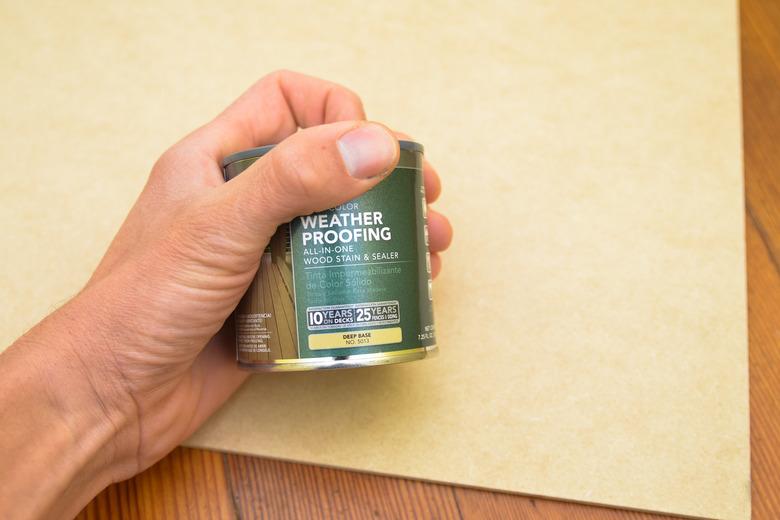How To Waterproof Plywood Panels
Things Needed
-
Waterproofing
-
Brush or rags
-
Pail of water (optional)
-
Saw horses (optional)
-
100- or 200-grit and paper (optional)
Warning
When using linseed oil for waterproofing, make sure you toss the rags that you use in a bucket of water once you have finished for the day. Linseed creates heat as it evaporates and the rags will burn. Let the rags sit in the pail of water for several days to sufficiently dilute the oil before throwing them away.
Plywood is a laminated material that accepts waterproofing easily. When plywood is used in any capacity outdoors, waterproofing prolongs its life. Since plywood is made by gluing layers of wood together and finishing it with a veneer, the layers are vulnerable to water damage. When plywood is exposed to excessive water, the glues disintegrate causing the wood to slowly rot and the layers to peel apart. Many waterproofing materials are easy to apply and dry quickly. Some do not change the appearance of the product.
Step 1
Select the kind of waterproofing that works best for the plywood. Deck waterproofing is easy to apply and it dries quickly. However, this kind of waterproofing eventually deteriorates, requiring subsequent coats over time. If the plywood is the subsurface for a deck, choose a more permanent waterproofing material with an oil base.
Step 2
Assemble the materials you need to complete the job. The sawhorses are useful when applying waterproofing because it keeps the plywood level and easy to reach. One of the best ways to apply waterproofing is outside because the fumes evaporate and do not concentrate inside the garage or building.
Step 3
Apply the waterproofing according to the directions on the original container. If the outside of the plywood panel is decorative, wipe the plywood down with a damp cloth and sand it lightly with 100- to 200-grit sandpaper first to smooth the surface of the plywood once the panel dries. By wetting the plywood first, the grain is slightly raised. After sanding the grain down, the surface will be smooth after applying the waterproofing material. Waterproofing material like linseed oil or deck waterproofing is easy to apply with either a rag or brush. If you are using an oil-based waterproofing material, brushes may give the best coverage.
Step 4
Flip the plywood over and apply the waterproofing to the other side. Apply waterproofing to all the edges of the plywood to create an impervious surface.




